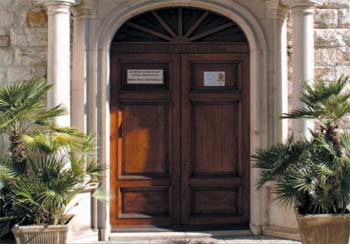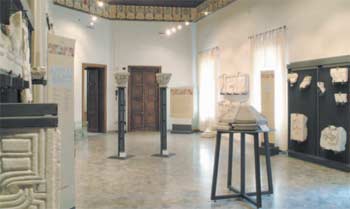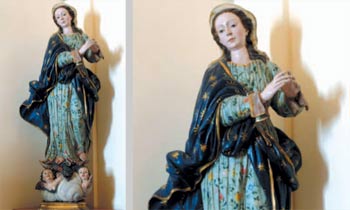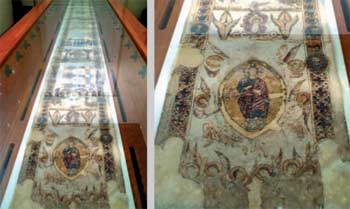
MUSEO DIOCESANO
Via Dottula
tel. 080/5288215
![]() critical
text by Antonella Marino
critical
text by Antonella Marino
The
reason for this triple comparison with the works in the Diocesan museum
of Bari is not only an aesthetic one; most of all, what brings together
these works is the modernization of the themes and of the holy iconography.
Francesco Arena focuses on the relationship between architecture and religion.
The artist has chosen not to relate to a single work but to a whole room
which houses precious sculptures coming from the nearby Cathedral. The
big whitewashed votive chapel in wood and fibreglass is the reinterpretation
of the many small chapels that can be found in the Apulian countryside,
expressions of an intense popular devotion. Arena's work is put with thoughtful
irony on a sphere, swinging "as taste, mood, passion and the precarious
balance in which every human action takes place".
An atmosphere of modern mystical vision permeates Bice Perrini's video-installation.
The author, interested in feminine themes, was attracted by a wooden statue
of the 18th century representing the Madonna of the Apocalypse. The biblical
symbology of the victory on evil becomes here a psychological victory
of the woman on herself, a metaphorical reaching of freedom, suggested
through the image of herself in a cage, passing from constraint to opening,
from dark to light.
Light, as "knowledge and reaching of the awareness of being"
is also the subject of Giuseppe Verga's new video and painting. His work
starts from a careful reading of the pergameneous scrolls of the eleventh
century - the Exultet and the Benedictional (with the rite of Benediction
of the Light and the Water told through writing and images) - to explore
the relationship between "Christian metaphysics and pagan mysticism".





